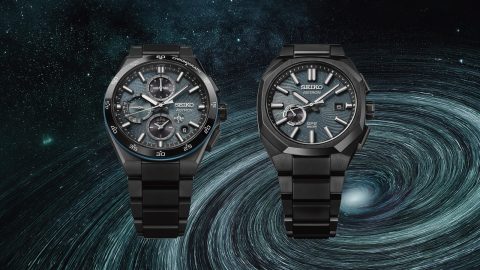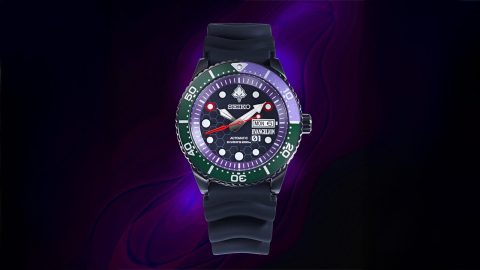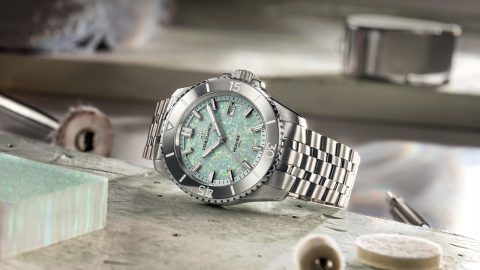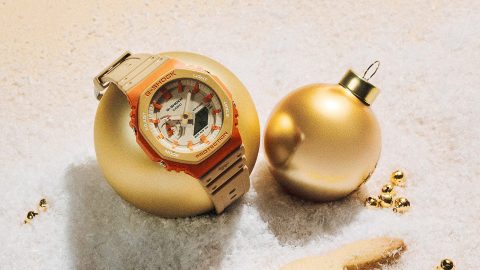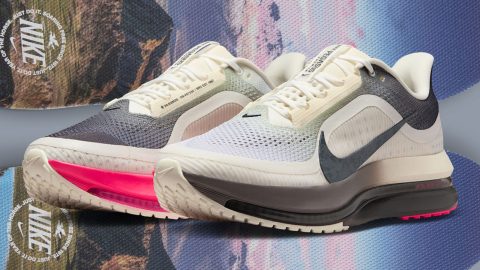Luxury comes naturally to IWC Schaffhausen. The beloved brand boasts a rich and storied history that’s deeply rooted in attention to detail and commitment to excellence. As so many of the world’s best and most innovative companies do, it all began with a dream—and a lofty one, at that, especially for the time.
A Look Back
It was the 1860s, and Florentine Ariosto Jones, a watchmaker from Boston, had a desire to bring his knowledge and skill of the craft to a fresh audience. He was inspired by the many advancements that had catapulted the American watchmaking industry to great heights, along with the practices that made Swiss timepieces in particular so beautiful. His goal was to combine the two.
Jones certainly knew what he was doing: He apprenticed and worked in the United States for several years before he moved to Switzerland with the intention of creating a watch factory. The premises itself was an impressive find: it was a modern for-the-time hydropower plant, and it allowed the workers space to perfect their designs. But his aim wasn’t to replicate his experiences in America—it was to introduce something new to discerning clients in the market, which is precisely why he applied for a special patent for “Improvement in Watch-Regulator.”
He and his partner, Charles Lewis Kidder, were intent on producing innovative constructions that stood the test of time. Cementing the success of the Swiss tradition, Jones founded the International Watch Company (IWC) there in 1874. It was truly a familial labor of love: his creative designs were made only in batches of 100, and several were signed with his brother’s name, others with his mother’s maiden name, and still others with his birth city.
Cementing the success of the Swiss tradition, Jones founded the International Watch Company in 1874.
Within a couple of years, Jones decided to sell the company and return to America. Although he worked in other industries during his later years, his love for the classic timepiece was never far from his heart. There is some mystery as to whether the likeness is actually his, but a photograph in the Library of Congress appears to depict Jones when he served in the Civil War. Clutched in his hand is a hefty pocket watch—clearly a harbinger of what was to come.
The First Movements
It’s fitting, then, that the brand’s first—and still one of its most noteworthy—creations was the Jones Calibre. It was reportedly produced between 1872 and 1876, and several thousand were generated during that period. It was unique for its straightforward, foolproof design that featured a three-quarter plate and a lengthy index pointer—a notable feature that later earned the moniker “Jones arrow.”
It’s fitting, then, that the brand’s first—and still one of its most noteworthy—creations was the Jones Calibre.
These pieces were produced with stability in mind. Unlike other Swiss movements made with finger bridges, the addition of the three-quarter plate set it apart from the rest. It was a fine example of the solid and reliable construction that could only come from the newly designed European factory.
Photo via IWC Pocketwatch
Of course, no progressive company worth its ambition would ever rest on its laurels. This is precisely why the Pallweber Pocket Watch arrived in the early 1880s. It was a digital masterpiece, and was among the first products of its kind to feature moving numerals. Miniature discs rotated at precise intervals, allowing the minutes and hours to show in dark, distinct lettering. Today, the rare IWC pocket watch range is highly sought after.
The Wristwatch Revolution
The revolutionary advent of the humble pocket watch was, alone, quite the feat for the time. It signified a new age in watchmaking, and its success drove the ambitious professionals at IWC to craft something just as compelling, just as groundbreaking, and just as appealing—the first wristwatch.
It was during the early 20th century that things began to move in this direction. The company’s ownership changed hands, and when Ernst Jakob Homberger took over, it was with the intention to progress with the times and meet the demands of watch consumers who, perhaps, didn’t even realize what they needed.
But the idea that arrived in 1915 was nothing short of cutting-edge. While wristwatches themselves had been in production for some time, IWC had not yet developed their own range. That year saw the introduction of their 75 and 76 calibre wristwatches, both of which set the stage for a legion of impressive pieces to follow.
The Pilot’s Influence
Technology and design are not mutually exclusive, and IWC was among the first labels to capitalize on that very basic principle. It was seen early in the century, when the Homberger took inspiration from his sons, who were both interested in aviation—so much so, in fact, that they galvanized the release of the “Special Pilot’s Watch,” or the first Pilot’s Watches the brand ever made.
Technology and design are not mutually exclusive, and IWC was among the first labels to capitalize on that very basic principle.
Made with calibre 83, the watches featured elements like break-proof crystal, rotating bezels, antimagnetic escapement, and highly visible numerals and hands. It could even take note of takeoff times. Most importantly for those in the aviation field, it was resistant to sudden changes in temperature, and could withstand anything from -40 degrees Fahrenheit to 104 degrees Fahrenheit.
This impressive launch was followed by the Big Pilot’s Watch some years later, largely designed in response to the growing demand for more quality pilot-focused pieces. It was created specifically for the German Air Force, and the supply was limited to just 1,000 pieces. It’s thought to be the most sizable wristwatch ever produced by the brand.
This, of course, was just the start of something unexpected for IWC. In 1944, the brand produced its W. W. W. watch: Watch, Wrist, Waterproof. The standout piece was created especially for the British Army.
Post-War Innovations
When wartime came to a conclusion, IWC returned to its roots. The brand continued to dominate the watchmaking world, producing highly inventive and spectacular designs that were renowned for both their stunning aesthetic beauty, their accuracy, and their incomparable ability to withstand all types of forces and damages.
Among the standouts was the Pilot’s Watch Mark 11, which was released in 1948. This legendary timepiece was a favorite of aviation personnel in the Royal Air Force, and was worn with frequency until at least 1981.
IWC introduced the 85 calibre in 1950, and it was immediately celebrated as the first to contain an automatic winding mechanism. By the end of the decade, the brand was also creating sleeker, less substantial 44 calibre movements for women. And not content to stop there, they released their first diver’s watch in 1967. It was a water-resistant masterpiece, and was quickly embraced by the professional community for its durability.
IWC introduced the 85 calibre in 1950, and it was immediately celebrated as the first to contain an automatic winding mechanism.
In 1977, IWC launched its 9721 calibre—a remarkable display of craftsmanship that was more than just visually pleasing. It was also the first pocket watch they had ever produced to include both a moon phase display and a calendar. Offering a certain fashionable finesse and style, it was clear that these pieces were more than just average pocket watches.
The Modern Era
It’s no secret that IWC remains the world’s most celebrated and illustrious watch brand. Recognized for their rich contributions to watchmaking history and innovative designs, the company continues to produce designs that set new, unparalleled standards.
Among the finest collections is Da Vinci, a breathtaking range of modern-day pieces that capture the essence of old-world Swiss tradition. The Tourbillon Retrograde Chronograph may be on the higher end of the scale, but it speaks to the brand’s penchant for designing only the most immaculate, timeless pieces. It’s constructed with dark brown alligator leather and an 18ct 5N gold case. The self-winding piece is only available in limited quantities.
For those who appreciate classic style, there’s the Portugieser range. The iconic design or the Portugieser Chronograph reflects back on the brand’s earliest days. Don’t be fooled by the diminutive size; despite that, it’s made with a thinner bezel that lends the appearance of a more substantial timepiece. Sleek hands and bold numerals lend it character, while the stainless steel case contributes to its enduring strength.
In a tribute to the legendary Pallweber Pocket Watch, the Jubilee Collection replicates the stately, old-world quality and style exuded by the original. Both pocket watches and wristwatches are available, and each evoke a certain sleek simplicity and modernity that lends them a hint of contemporary edge.
For those whose pursuits are decidedly more aquatic, there’s the brilliance of the Aquatimer Automatic Edition Expedition Jacques-Yves Cousteau. Designed with a stainless steel case, the automatic watch features a black rubber strap and a sapphire glass cover that lends it incredible style. The blue dial lends it a luminous, sophisticated finishing touch.
One Step Ahead
There’s more to the IWC Schaffhausen collection than just watches. The brand also produces bracelets and straps that make it easy to swap one look for another, making it easy to mix and match styles depending on the season or the look that you’re after. And taking inspiration from the legendary Big Pilot’s Watch, the brand also introduced a line of handsome cufflinks whose design was borrowed from the watch’s conical crown.
Contributing to the annals of fashion history is only a small part of the IWC story. The brand continues to draw inspiration from scenery, color, attractions, and beauty sourced from all over the world. It’s but a chapter in the legendary company’s illustrious and continuing story of watchmaking greatness.


